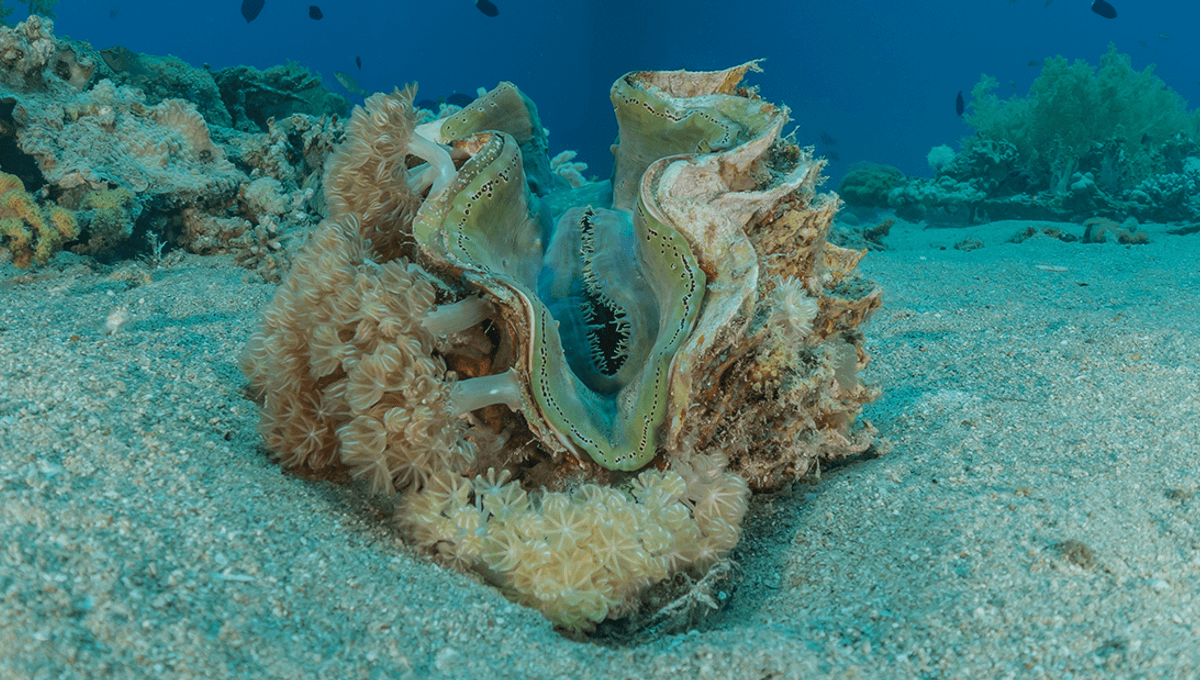
Giant clams, as their name suggests, are pretty big. The mollusks sit on the ocean, can reach up to 1.2 meters (4 feet) in length, and weigh over 226 kilograms (500 pounds). Some species can live for over a century in the wild, and make giant pearls while they’re at it.
It’s really no wonder that legends have sprung up around the creatures, including that they attack and eat humans, from which they get their nickname the “man-eating clam”.
According to one account, the “Pearl of Allah” – thought to be the largest pearl in the world at the time – was discovered in a giant clam that had killed a diver. Recounting a story told to him whilst in the Philippines, American archaeologist Wilburn Dowell Cobb claimed that one of the divers noticed another was missing.
“Bogtong had realized that he had missed Etem, one of his assistants, on the last three dives. All the men were alarmed. Suspecting a giant octopus, they unsheathed their knives and, as one, dove down in search of their missing comrade,” Cobb wrote in Natural History Magazine in 1939.
“On the fourth dive they found Etem already dead. In his search for conch shells, he had failed to see the giant Tridacna clam which was partly hidden by coral rocks, its huge jaws held open ready to clamp shut with the strength of a bear trap. Etem accidentally got his hand between the shells, which snapped shut, and thus he met his death. With the aid of ropes, the men hoisted their dead comrade and his deep-sea murderer into one of the canoes.”
Cobb wrote that the old man who recounted him this story claimed that he had seen others die in this way, during his time collecting pearls.
While no doubt a fun story – who doesn’t like an intriguing tale of a sea monster – there are plenty of reasons to be skeptical, including that Cobb later claimed that the pearl was in fact the “lost Pearl of Lao Tzu” made over 2,500 years ago. Carbon dating showed this not to be the case.
The US Navy, however, took this and other reports of man-eating clams seriously, producing a guide for divers on how to avoid becoming a meat pearl.
“The man-eating myth was so persistent that decades later, U.S. Navy diving manuals still advised frogmen how to free themselves if caught in the ‘vise-like’ grip of a giant clam,” University of Florida environmental journalist in residence Cynthia Barnett wrote in her book The Sound of the Sea: Seashells and the Fate of the Oceans, “by inserting a knife between the valves and severing the animal’s adductor muscle.”
In reality, you do not have to worry about attacks by giant clams, with no verified accounts of them killing or eating humans. The clams have a symbiotic relationship with algae, which provides them with a food entirely dissimilar to divers.
The clams can close fairly quickly in response to changes in light but this is a self-defense mechanism. As seen in the video above, many cannot shut their shells the whole way. As usual, they have more to fear from humans, having been brought close to extinction due to harvesting and destruction of their habitats by overfishing.
Source Link: The US Navy Used To Tell Divers How To Fight Giant Clams